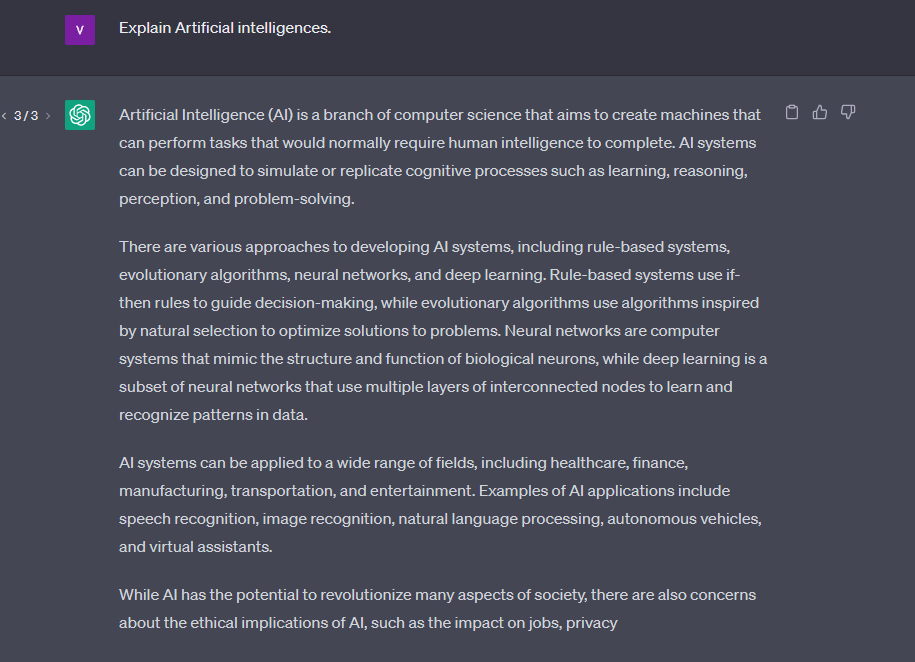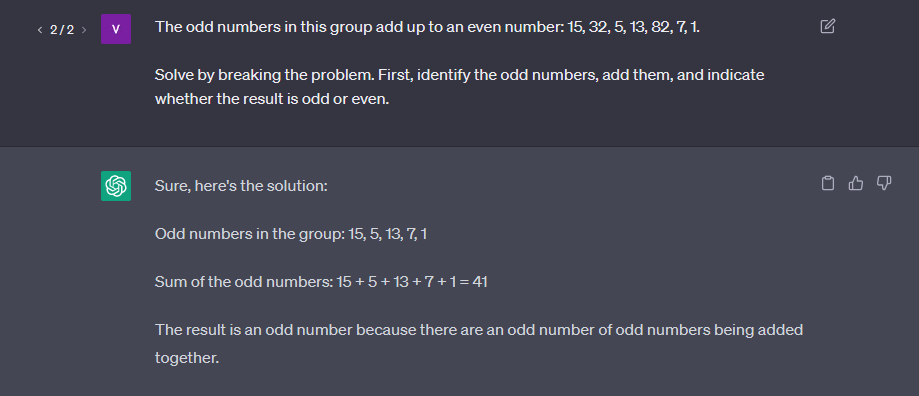Prompt engineering is an essential element in the development, training, and usage of large language models (LLMs) and involves the skillful design of input prompts to improve the performance and accuracy of the model.
Table of Contents
What is Prompt Engineering?
Prompt engineering is the practice of developing and modifying the input to generative AI models such as ChatGPT, GPT-3, DALL-E, Stable Diffusion, Midjourney, and others. The ultimate purpose of prompt engineering is to improve the performance of the language model by providing well-structured, concise, and tailored input that is relevant to the job or application for which the model is designed.
Prompt engineering frequently involves the careful selection of words and phrases included in the prompt, as well as the overall structure and organization of the input, to achieve this purpose. This systematic approach to prompt engineering is essential because even tiny modifications to the prompt can have a major influence on the outcome.
Effective prompt engineering requires an in-depth understanding of the capabilities and limits of large language models (LLMs), as well as the ability to build engaging input prompts. Furthermore, prompt engineering often involves providing context to the LLM in order for it to generate coherent responses, such as by leveraging external documents or proprietary data or framing the input in a way that helps the model understand the context.
Also Read Prompt engineering use case and key concepts.
Basic Prompting
Text Summarization
One of the standard tasks in natural language generation is text summarization. Text summarization can include many different flavors and domains. One of the most promising applications of language models is the ability to summarize articles and concepts into quick and easy-to-read summaries. Let’s try a basic summarization task using prompts.
Let’s say I am interested to learn about Artificial intelligences, I could try a prompt like this:
Explain Artificial intelligences.Output:

I utilized it here to inform the model that a further step is expected. It’s unclear in this example how this is beneficial vs not utilizing it, but we’ll leave that for other examples. Assume that this is too much information and that you wish to summarize it further. We can tell the model to summarize in one phrase by saying:
prompt:
Artificial Intelligence (AI) refers to the development of computer systems that can perform tasks that would normally require human intelligence to accomplish. These tasks may include recognizing speech or images, making decisions, translating languages, and even driving vehicles. There are two main approaches to developing artificial intelligence: rule-based and machine learning. In rule-based AI, programmers manually encode rules and logic that the system uses to make decisions. In machine learning, the system learns from data without being explicitly programmed, using statistical models and algorithms to identify patterns and relationships in the data.
Explain the above in one sentence:Output:

Without focusing too much on the accuracy of the output above, which we will discuss in an after guide, the model attempted to summarize the paragraph in one phrase. You can get creative with the directions, but that’s for another chapter. Pause here and experiment to see if you obtain better results.
Information Extraction
While language models are trained to perform natural language generation and related tasks, they are also adept at classification and a variety of other natural language processing (NLP) tasks.
Here’s an example of a prompt that takes data from a text.
Prompt:
Author-contribution statements and acknowledgements in research papers should state clearly and specifically whether, and to what extent, the authors used AI technologies such as ChatGPT in the preparation of their manuscript and analysis. They should also indicate which LLMs were used. This will alert editors and reviewers to scrutinize manuscripts more carefully for potential biases, inaccuracies and improper source crediting. Likewise, scientific journals should be transparent about their use of LLMs, for example when selecting submitted manuscripts.
Mention the large language model-based product mentioned in the paragraph above:Output:

There are other ways to enhance the above findings, but they are already quite valuable.
It should be obvious by now that you can ask the model to execute various tasks simply by telling it what to do. That is a powerful capability that AI product developers are already utilizing to create powerful products and experiences.
Question Answering
Improving the prompt structure is one of the greatest strategies to encourage the model to respond to particular replies. As previously discussed, a prompt can integrate instructions, context, input, and output signs to provide better outcomes. While these components are not required, they are a good practice because the more specific you are with instruction, the better the results. Here’s an example of how this may appear after a more organized question.
Prompt:
Answer the question based on the context below. Keep the answer short. Respond "Unsure about answer" if not sure about the answer.
Context: Teplizumab traces its roots to a New Jersey drug company called Ortho Pharmaceutical. There, scientists generated an early version of the antibody, dubbed OKT3. Originally sourced from mice, the molecule was able to bind to the surface of T cells and limit their cell-killing potential. In 1986, it was approved to help prevent organ rejection after kidney transplants, making it the first therapeutic antibody allowed for human use.
Question: What was OKT3 originally sourced from?
Answer:Output:

Text Classification
So far, we’ve followed simple instructions to complete a task. As a prompt engineer, you will need to improve your ability to provide better instructions. But wait, there’s more! You will also discover that for more difficult use cases, simply providing instructions is not enough. This is where you should think more about the context and the various prompt elements. Input data and examples are two more aspects you may supply.
Let us try to explain this using a text categorization example.
Prompt:
Classify the text into neutral, negative or positive.
Text: I think the food was okay.
Sentiment:Output:

Conversation
One of the most interesting tasks you can accomplish using prompt engineering is to train the LLM system on how to act, its objective, and its identity. This is very handy for developing conversational systems such as customer care chatbots.
For example, imagine a conversational system that can provide more technical and scientific replies to inquiries. Take note of how we directly tell it how to act via the instruction. Role urging is another term for this.
Prompt:
The following is a conversation with an AI research assistant. The assistant answers should be easy to understand even by primary school students.
Human: Hello, who are you?
AI: Greeting! I am an AI research assistant. How can I help you today?
Human: Can you tell me about the creation of black holes?
AI: Output:

Code Generation
Code creation is one application in which LLMs perform well. Copilot is an excellent example. With clever prompts, you can perform a wide variety of code-generation tasks. Consider the following instances.
Let’s start with a basic program that greets the user.
Prompt:
/*
Ask the user for their name and say "Hello"
*/Output:

Reasoning
One of the most challenging things for an LLM nowadays may need some level of thinking. Because of the sorts of complicated applications that might arise from LLMs, reasoning is one of the areas in which I am most interested.
Some progress has been made in tasks requiring mathematical abilities. However, it is important to note that current LLMs struggle with reasoning tasks, necessitating even more advanced prompt engineering techniques. These advanced strategies will be covered in the following handbook. For the time being, we shall examine a few fundamental examples to demonstrate arithmetic ability.
Prompt:
The odd numbers in this group add up to an even number: 15, 32, 5, 13, 82, 7, 1.
Solve by breaking the problem. First, identify the odd numbers, add them, and indicate whether the result is odd or even. Output:

This article is to help you learn about prompt engineering. We trust that it has been helpful to you. Please feel free to share your thoughts and feedback in the comment section below.
Leave a Reply
You must be logged in to post a comment.